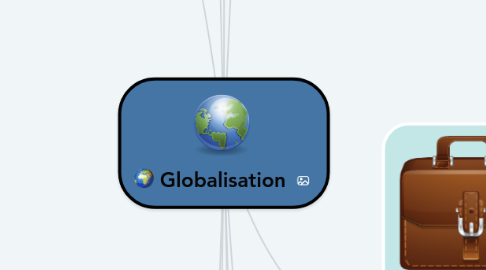
1. Production
1.1. Manufacturing facilities
1.1.1. Imposition of restrictions
1.1.2. Reduce the cost
1.1.2.1. Production
1.1.2.2. Transportation
1.1.2.3. Delivery
1.2. Low cost/High quality
1.2.1. Raw materials
1.2.2. Foreign countries
1.2.3. Leadership
1.3. Inputs at low cost
1.4. Skilled Human Resources
1.5. Liberal labour laws
1.6. Facility of exporting
1.7. Purchasing Power Parity
2. Technology
2.1. Revolution
2.1.1. Telecommunication
2.1.2. Information
2.1.3. Transportation
2.2. Low cost/High quality
2.3. Companies
2.3.1. Technological collaboration
2.3.2. Distinctive competencies
2.3.3. Joint Ventures
2.3.4. Mergers
2.3.5. Virtual Global Company
2.3.5.1. Revolutionary changes
2.4. Microprocessor and Telecommunications
2.4.1. High-power
2.4.2. Superior-speed
2.4.3. Global telecommunications
2.4.3.1. Microprocessors
2.4.3.2. Co-ordinating operations
2.4.4. Internet and World Wide Web
2.4.4.1. Blackbone of Global Business
2.4.4.2. Virtual companies
2.4.4.2.1. Monitored
2.4.4.2.2. Controlled
2.4.4.3. E-mail
2.4.4.4. Voice mail
2.4.4.5. Data
2.4.4.6. Real-time video communications
2.4.4.7. Video conferencing
2.4.4.8. Blackbone of Global Business
2.4.5. Download information
2.4.5.1. Designs
2.4.5.2. Specifications
2.4.5.3. Models
2.4.5.4. Prices
2.4.5.5. Constumers
2.4.5.5.1. Service
2.4.5.5.2. Market information
2.4.6. On-line Globalisation
2.4.6.1. Customer preferences
2.4.6.2. Online transaction
2.4.6.3. Interaction facility
2.4.6.4. Export and Import
2.4.6.5. Business Process Re-engineering Enterprise Recource Planning
2.4.6.6. Supply Chain Management
2.4.6.7. Business to Business (B2B)
2.4.6.7.1. Service industry
2.4.6.7.2. Foreing companies
2.4.6.8. E-commerce
2.4.7. Transportation Technology
2.4.7.1. Reduced distance
2.4.7.2. Commercial jet aircraft
2.4.7.3. Super fighters
2.4.7.4. Containers
2.4.7.5. Travel time
3. Investment
3.1. Foreing investment
3.1.1. Exports
3.1.2. Imports
3.2. GATT
3.2.1. Reduce the trade restrictions
3.3. World Trade Organisation
3.3.1. Investment barriers
3.4. Foreign Direct Invest
3.4.1. Production
3.4.1.1. Product
3.4.1.2. Service
3.4.2. Developing countries
3.4.3. Domestic companies
3.4.3.1. Low limitations of exporting
3.5. Small and medium size companies
3.5.1. Investing foreign countries
3.6. Liberalising the measures
3.7. Sourcing Funds Globally
3.7.1. Investment internationally
3.7.1.1. Multinational Coporation (MNCs)
3.7.2. IBRD
3.7.2.1. Capital for companies
3.7.2.1.1. Private
3.7.2.1.2. Public
3.7.3. IFC
3.7.3.1. Loans
3.7.3.1.1. Low rate
3.7.3.1.2. Low interest
3.7.4. International Development Association
3.7.4.1. Loans
3.7.4.1.1. Private sector companies
3.8. Modes of Globalisation
3.8.1. Joint Ventures
3.8.2. Long term loans
3.8.3. Issuing Equity Shares, Debentures and Bonds
3.8.4. Global Deposit Receipts
4. Methods
4.1. Exporting directly
4.2. Exporting indirectly
4.3. Licensing/Franchising
4.4. Contract Manufacturing
4.5. Full Marketing Facilities
4.6. Joint Ventures
4.7. Mergers
4.8. Strategic Alliance
5. Global business
5.1. Integratation of the economy
5.1.1. Society
5.2. International Business
5.2.1. Goods and services
5.2.2. Emerging economy
5.3. Expand Business
5.4. Manufacturing and distribution facilities
5.4.1. Raw materials
5.4.2. Machinery
5.4.3. Technology
5.4.4. Human Resources
5.5. Global Orientation
5.5.1. Strategies
5.5.2. Organisational structure
5.5.3. Managerial expertise
5.6. Low cost/High quality
5.7. Developing countries
5.8. Base of the pyramid
6. Markets
6.1. Consumer
6.2. Gross Domestic Product
6.3. National markets
6.3.1. Increase profits
6.3.2. Company goals
6.4. Foreign markets
6.4.1. Non-consumer
6.4.1.1. Industrial products
6.5. Industrialisation
7. Stages of Globalisation
7.1. Domestic company
7.1.1. Foreign countries
7.1.1.1. Internactional company
8. Advantages
8.1. Free flow of capital
8.1.1. Fair interest rate
8.1.2. Lower finance cost
8.2. Free flow of technology
8.2.1. Advanced countries
8.2.2. Developing countries
8.3. Increase in industrialisation
8.4. Spread up of production facilities
8.4.1. Production factors
8.5. Balanced development of world economies
8.5.1. Flow of capital
8.5.2. Technology
8.5.3. Locating manufacturing
8.6. Lower Prices/High Quality
8.6.1. Industrialisation
8.6.2. Spread up of technology
8.6.3. Increased production
8.6.3.1. Consumption level
8.7. Cultural exchange
8.7.1. Culture of other countries
8.8. Demand for variety of products
8.8.1. Products of other countries
8.9. Increase in employment and Income
8.9.1. Job opportunities
8.10. Higher standards of living
8.10.1. Reduce prices
8.11. Balanced human development
8.11.1. Skills of the people
8.11.2. Welfare facilities
8.11.2.1. Hospitals
8.11.2.2. Education
8.12. Increase in welfare and prosperity
8.12.1. Balanced industrial
8.12.2. Social and economic development
8.12.2.1. Prosperity
8.12.3. Govermenment
8.12.3.1. Increase the welfare
9. Disadventages
9.1. Globalisation kills domestic business
9.1.1. Compete with MNCs
9.2. Exploits human resources
9.2.1. Unscrupulous foreign industries
9.2.1.1. Abuse the labour
9.2.1.2. Natural resources
9.3. Violation of environmental laws
9.3.1. Violate the environmental laws
9.3.1.1. Cost advantage
9.3.2. Child labour
9.3.3. Pollute environment
9.3.4. Workplace safety
9.3.5. Health issues
9.4. Leads to unemployment and underemployment
9.4.1. Domestic industry´s operations
9.4.2. Reduction in employment
9.5. Decline in demand for domestic products
9.5.1. MNCs
9.5.1.1. High quality
9.5.1.2. Lower prices
9.6. Decline in Income
9.6.1. Decline
9.6.1.1. Domestic products
9.6.1.2. Agricultural goods
9.6.1.3. Services
9.6.1.4. Reduction in income of people
9.7. Widening gap between poor and rich
9.7.1. Poor
9.7.1.1. Decline income
9.7.1.2. minimum wage
9.7.2. Rich
9.7.2.1. Competent people
9.7.2.2. Innovative skills
9.7.2.3. Abnormal income
9.8. Transfer of natural resources
9.8.1. Exploit the natural resources
9.8.1.1. Sell in other countries
9.8.1.2. Transferred to other countries
9.9. Leads to commercial and political colonialism
9.9.1. Cycle of globalisation
9.10. National sovereignty at stake
9.10.1. Shiff of economic power
9.10.1.1. Independet countries
9.10.1.1.1. Supernational organisations
10. Essential Conditions
10.1. Liberalising rules and regulation of control
10.2. Removal of quotas and tariffs
10.3. Infrastructure facilities
10.4. Removal of bureaucratic hurdles
10.5. Encouraging research and development
10.6. Competitiveness based
10.6.1. Quality
10.6.2. Price
10.6.3. Delivery
10.6.4. Customer service
10.7. Autonomy to the public
10.7.1. Public sector
10.7.2. Private sector
